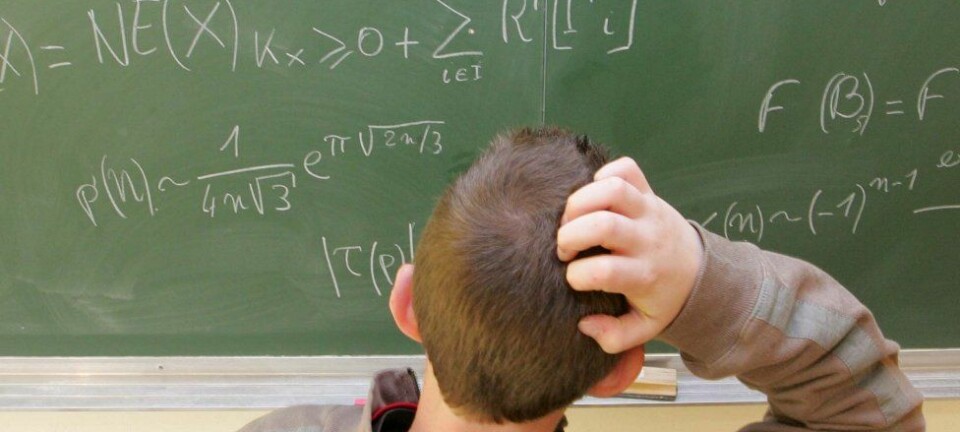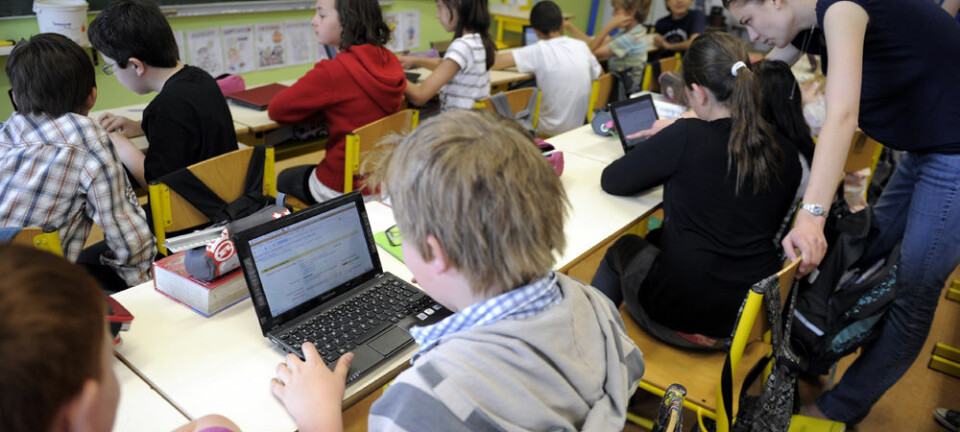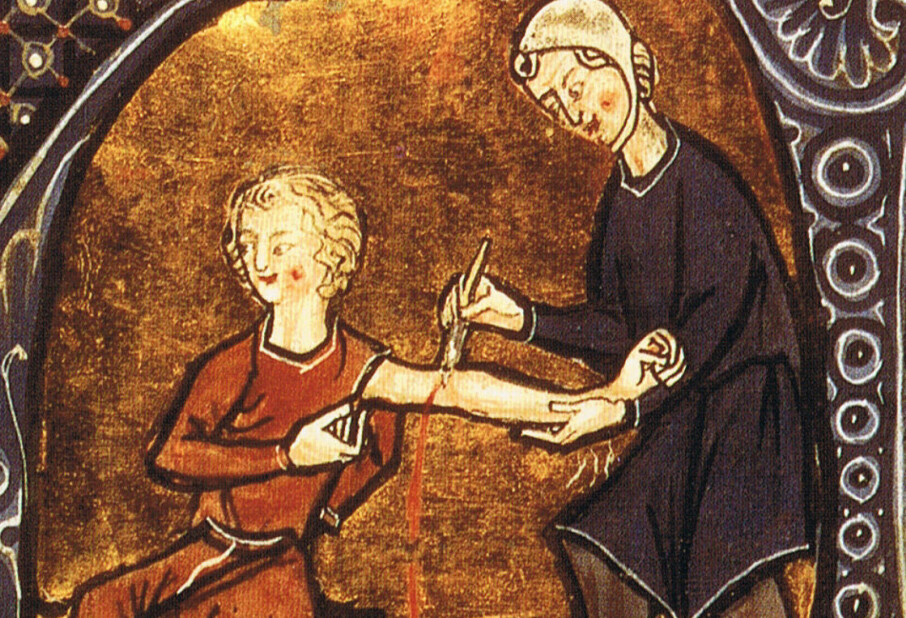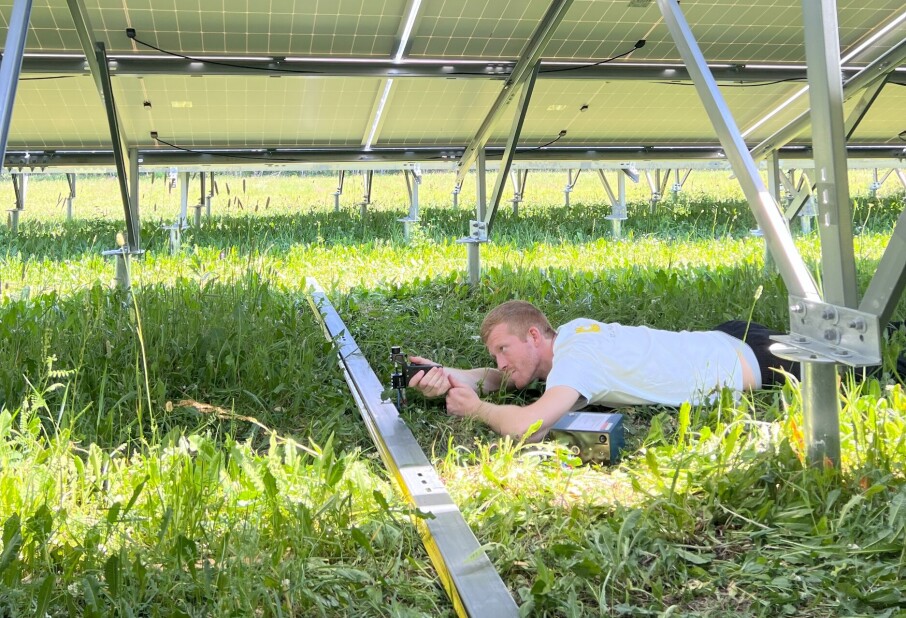
Analogue text still the best learning tool
Old fashioned printed text on paper gave best results in a new study of learning tools, but multimedia tools also proved effective. Schools need to know more about the different learning tools, says researcher.
Denne artikkelen er over ti år gammel og kan inneholde utdatert informasjon.
Schools have put plenty of emphasis on using ICT and multimedia as educational tools. Despite a lack of documentation it’s been assumed they enhance learning.
“But little empirical research has been done, so my study can contribute something here,” says researcher Glenn-Egil Torgersen.
In his work on a doctorate in psychology, he tested three different audiovisual tools in history teaching at BA level and compared these with the learning that students achieved by reading regular texts.
It turned out that one of the three multimedia tools proved more effective than the text, while the other two failed to match up to reading regular printed text on paper.

“It’s become a general consensus that a multimedia classroom is automatically beneficial, but that doesn’t seem to hold true,” he says.
Decisive short-term memory
The content in all four tools was identical in all the teaching schemes, but it was presented in different ways.
The sound and image method that gave a better learning dividend than plain text consisted of alternating pictures and text, with a low density of information.
“Here only a little information was portioned out at a time and a commentator was patched in intermittently. If an important date was presented, it was repeated,” says Torgersen.

He also tested a film in which a commentator is speaking to the camera. The third variety mixed in a lot of text and narration simultaneously, as well as motion picture and stills, with background audio and music.
These latter two gave less comprehension than the fourth alternative – pure text − for all the students. The content was adapted to ensure it was unfamiliar to all the students.
Surprising finding
The schemes Torgersen tested were relevant to the school system on any grade level. The study showed that multimedia tools shouldn’t be used indiscriminately.
He recommends careful consideration the programme’s structure and adaptation.
The researcher was surprised that analogue texts yielded the most consistent learning results for all the students. He has personal experience as an educator and has had good results with the use of video, sound and pictures, in his teaching.
“I thought multimedia would offer more natural and better learning processes. But your favourite tools aren’t necessarily the ones that provide the most learning.”
Torgersen thinks it would also be interesting to test interactive multimedia tools, for instance those that enable students to click on a year and then be linked to further information.
Biggest differences with multimedia
The researcher found one disadvantage with even the best multimedia option: multimedia tools gave the biggest spread of learning and comprehension among the students.
The learning yield was most evenly distributed in the class where students simply read analogue text. With the most effective multimedia presentation they all learned a little more, but the students with the best short-term memory skills experienced the greatest improvements – they got the most out of the tool.
Torgersen measured the students’ short-term memories by having them remember pictures and words and repeat them within a 30-second timeframe. He also carried out an older, well-established type of short-term memory test which isn’t adapted to modern media.
Asked whether the students' fields of interest had any bearing on the test, he says: “No, we only measured direct learning. Their interests and other issues would be influential factors.”
He plans to present his findings about multimedia use to the Ministry of Education and Research with an eye on how it could benefit Norwegian schools and higher education.
Not just a proclivity issue
Multimedia learning retention hasn’t been tested against short-term memory before, but Torgersen thinks short-term memory has a significant impact.
“Previously it’s been sufficient to say that certain people are more visually disposed, while others are more verbal,” he says. “But that appears too simple. You have to look at specific memory processes to find out what people are actually retaining.”
The ability to process information little by little and also recognise patterns, how things are pieced together – which is often important in software – has an effect on the learning dividends the students got from multimedia tools.
Regular text is more active
The researcher says that students with the worst short-term memory skills are not necessarily the ones who generally do poorest in school, but this can be a drawback when you are trying to obtain new knowledge.
“If you can’t process the information due to low short-term memory capacity, your learning will be fragmented,” he says.l
He believes this capacity has less impact if you are actively involved in the process, and this is where regular text has its advantages.
He also explains that students can read at their own speed and divvy it out according to their personal capacity. A medium such as film controls the process more strongly, and this is one of the main reasons why some multimedia tools result in poorer educational dividends.
Memory and attention
Your memory can be affected circumstantially and is also guided by your attentiveness.
“The more attentive you are to the source, the deeper your memory gets etched. If you’re having a bad day or there are other things distracting you, this will impact your learning,” he says.
His study was carried out in classrooms, where these and other factors can have affected how much information the students were grasping.
“They were tested in a natural learning environment, so incidental noises and things such as someone dropping a pencil played a part,” he says.
----------------------------------------
Read this article in Norwegian at forskning.no
Translated by: Glenn Ostling
































